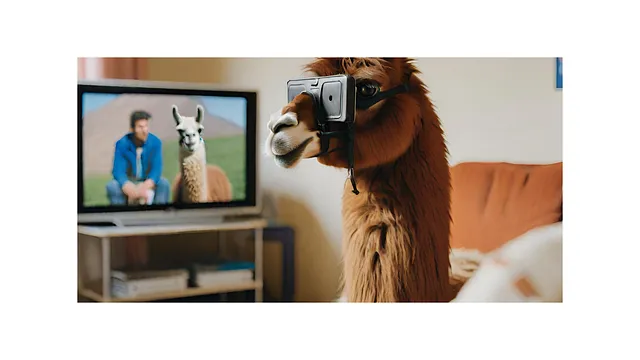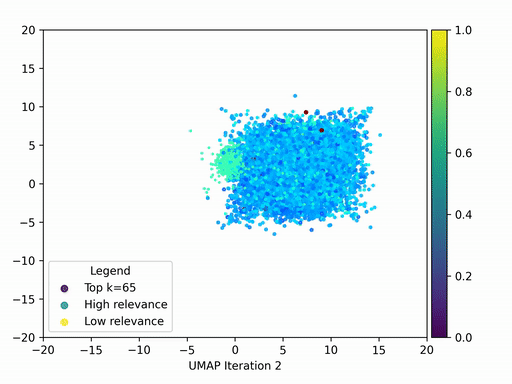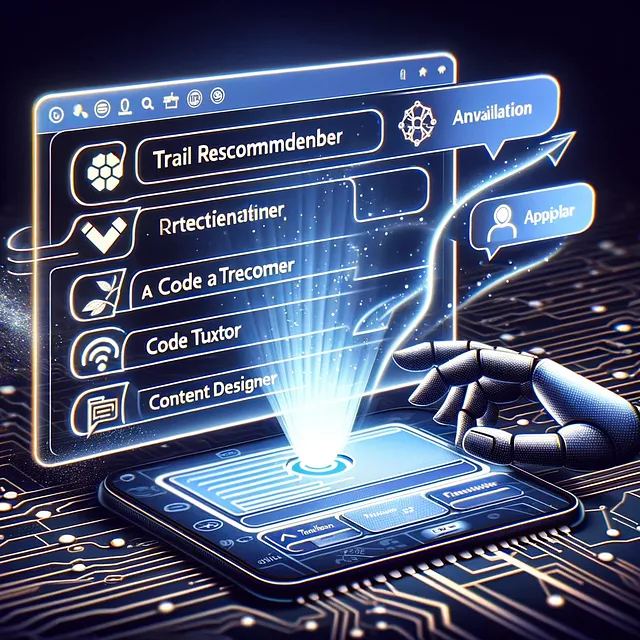在Google Colab中为Fine-Tuning Llama2创建自己的数据集:一步一步指南(第1部分)

您将学到什么内容:
- 如何使用Llama2自定义创建您自己的数据集进行指导微调
- 从数据集构建到微调的端到端过程:一切都在您喜爱的Google Colab上进行(免费版本!) :)
(在此阅读第2部分)
为什么要进行微调?
我可以列举一百个原因,解释为什么对一个开源的LLM进行微调是取得出色表现的秘诀,但让我们聚焦于一些受欢迎的原因:
- 你需要一个格式专家来输出特定格式的数据,比如json、csv或者其他你需要的格式。
- 您想要一个领域专家,或者拥有最新最好见解的内容。
- 您想免费模仿ChatGPT的状元宝!
无论原因如何,我在这里向您展示如何构建自定义数据集以对Llama2-7b模型进行微调。更具体地说,我们将制作自己的Llama来观看电影"芭比!"
在我们继续之前,我们的LLama2了解2023年电影《芭比》吗?我们问道:告诉我关于电影《芭比》的事情。LLama回答说:
巴比是一部关于一个小女孩梦想成为芭蕾舞演员的电影。她的祖母送给她一个芭蕾舞女孩的玩偶。玩偶突然活了起来,并带领巴比展开了成为真正的芭蕾舞演员的旅程。
这不是我们想要的!由于GenAI模型不确定性,我们再次进行了询问。这是我们得到的结果:
对不起,我不知道你在说什么。你能更具体一点吗?
构建自定义数据集:
首先,让我们搭建我们的环境。我们需要在Google Colab中安装一些重要的软件包。
!pip install langchain_openai langchain
Langchain是一种适用于各种LLM应用的出色框架。如果您完全不熟悉,请查看这个亲身教程。
这些是我们必需的导入项。您还需要一个OpenAI API密钥。这些非常容易获得,并提供了一种快速和低成本的生成文本的方式。
import pandas as pd
import time
from tqdm import tqdm
import langchain
from langchain_openai import OpenAI
import re
from typing import List, Tuple
import os
os.environ["OPENAI_API_KEY"] = 'get-your-own-api-here'
现在,该构建数据集了。在本教程中,我们将使用电影芭比的维基百科文章的一部分。我们需要三个描述部分。简介、剧情和演员阵容。
intro_description = f"""Barbie is a 2023 fantasy comedy film...""" #the full intro description
plot_description = f"""Stereotypical Barbie ("Barbie") ...""" #the full plot description
cast_description = f"""Margot Robbie as Barbie, often ...""" #the full cast description
通常,您需要大约1000个指令-响应对来构建一个经过指令优化的数据集。然而,根据特定的应用场景,您可能需要更多。在这里,我们选择一千个。
- 从介绍部分开始,我们将获得300对。
- 从情节中,我们将得到600对。
- 从演员中,我们将得到100对。
我们准备设计我们的提示信息。ChatGPT喜欢结构化和详细的提示信息,我们将尊重这一点!
focus = None #can be introductory, plot (start/middle/end) or cast
describe = None #can be intro_description, plot description or cast_description
prompt = f"""### Instruction: Based on the {focus} information of the movie
"Barbie" below, generate 5 instruction-detailed response pairs.
Make sure the Instruction-Response are in the json format:\n\n
### Example: {{"Instruction": "the instruction", "Response": "the response"}}\n\n
### Description:{describe}\n\n
### Response:"""
根据需要,相应地修改“focus” 和 “describe” 变量(稍后会更详细介绍)。
我们还需要从一个将字符串转换为JSON格式的文件中提取结果。以下是用于此目的的有用代码:
def extract_instruction_response_pairs(string: str)-> Tuple[List[str], List[str]]:
"""
Extracts pairs of instructions and responses from a JSON-formatted string.
Parameters:
- json_string (str): A string containing JSON-formatted instruction and response pairs.
Returns:
- instructions (list): A list of extracted instructions.
- responses (list): A list of extracted responses corresponding to the instructions.
"""
pattern = r'{"Instruction": "(.*?)", "Response": "(.*?)"}'
# Use re.findall to extract matches
matches = re.findall(pattern, string)
# Extract lists of "Instruction" and "Response"
instructions = [match[0] for match in matches]
responses = [match[1] for match in matches]
return instructions, responses
以下将从介绍部分生成300对指令和回应。
## Generating based on the intro section
All_instructions = []
All_reponses = []
start = time.time()
for idx in tqdm(range(60)): # 5 pairs per iteration will result in 5*60=300 pairs
focus = "introductory"
describe = intro_description
prompt = f"""### Instruction: Based on the {focus} information of the movie
"Barbie" below, generate 5 instruction-detailed response pairs.
Make sure the Instruction-Response are in the json format:\n\n
### Example: {{"Instruction": "the instruction", "Response": "the response"}}\n\n
### Description:{describe}\n\n
### Response:"""
generated_text = llm(prompt)
ins, res = extract_instruction_response_pairs(generated_text)
All_instructions.extend(ins)
All_reponses.extend(res)
print("\n\n===Time: {} seconds===".format(time.time()-start))
以相似的方式,我也生成了情节的文本。为了更“详细”起见,我进一步将情节分为三个独立的部分:
- 剧情介绍的前两段是饰演一名年轻画家的主人公艾莎。她正在为一次艺术展览准备作品,但缺乏创作灵感。她对自己的艺术感到困惑和失望,开始渐渐质疑自己的天赋和才华。在她最需要启发和动力的时候,她遇到了一位神秘的老人,后者声称能够帮助她找回失去的创造力。 老人告诉艾莎,她需要在自然中寻找答案。于是,艾莎决定离开繁忙的城市生活,去大自然中寻找她的艺术灵感。在山林和湖泊之间,她重新连接了与大自然的关系,并开始观察和倾听自然世界的声音。这个过程让她重新点燃了内心的激情,恢复了对艺术的信心。她回来艺术展览,并展示了一系列充满生命力和创造力的作品,赢得了观众的瞩目和赞赏。
- 故事的中间三段是关于主要情节的。其中,主人公发现了一个秘密,这个秘密将改变他的一生。他开始寻找真相,并与其他角色展开了一系列冒险和斗争。在这段时间里,他经历了许多困难和挑战,但从中学到了很多重要的教训。最终,他成功地解开了谜团,并取得了巨大的胜利。这三段深情而引人入胜,为整个故事的发展奠定了基础。
- 剧情的最后两段: 故事发展到最后,主角们终于揭开了谜团。他们找到了失踪的宝藏,并将其带回到村庄。村民们欢呼雀跃,感谢主角们的英勇行为。他们终于可以重新建设并恢复村庄的繁荣。 整个故事以一种令人振奋的方式结束。主角们学到了很多关于友谊,互助和勇气的重要教训。他们的冒险不仅使他们自己受益,也影响了整个村庄。通过面临挑战并克服困难,他们证明了团结和努力的力量。这个故事将永远留在人们的心中,激励着每个人去追求自己的梦想,并相信团队合作的力量。
# ## Generating based on the plot section
focus_list =["first 2 paragraph of plot", "middle 3 paragraph of plot",
"last 2 paragraph of plot"]
how_many_iteration = [20, 60, 40] #we want more data from middle section
describe = plot_description
for focus, iteration in zip(focus_list, how_many_iteration):
for idx in tqdm(range(iteration)):
prompt = f"""### Instruction: Based on the {focus} information of the movie
"Barbie" below, generate 5 instruction-detailed response pairs.
Make sure the Instruction-Response are in the json format:\n\n
### Example: {{"Instruction": "the instruction", "Response": "the response"}}\n\n
### Description:{describe}\n\n
### Response:"""
generated_text = llm(prompt)
ins, res = extract_instruction_response_pairs(generated_text)
All_instructions.extend(ins)
All_reponses.extend(res)
而演员的代码将遵循与介绍部分相同的方法。
最后,让我们把所有的元素结合起来,构建一个pandas的数据集。
df = pd.DataFrame({
"Instructions": All_instructions,
"Responses": All_responses
})
df.to_csv("Barbie_ChatGPT_genAI.csv", index=False)
您可以从Google Colab下载数据。如果您以前没有这样做过,请查看这个简短的演示。
数据:https://github.com/sadat1971/Llama2_custom_finetuning/tree/main/Data
代码:https://github.com/sadat1971/Llama2_custom_finetuning/blob/main/Barbie_QA_chatGPT.ipynb
第二部分:如何在自定义数据上进行微调
重要提示:
- 虽然我们的目标是构建1000个示例对,但实际上我们只得到了954个。这是由于LLMs的非确定性特性造成的。不过,成功率为95.4%,还算不错!
- 在这个教程中,OpenAI API 的总费用只需 0.27 美元(是的,27美分!)。
- 这一代花了大约6分钟的时间。
- 您可以在OpenAI的温度、top-p和一些提示结构上进行调整。这是一篇很不错的阅读内容。






